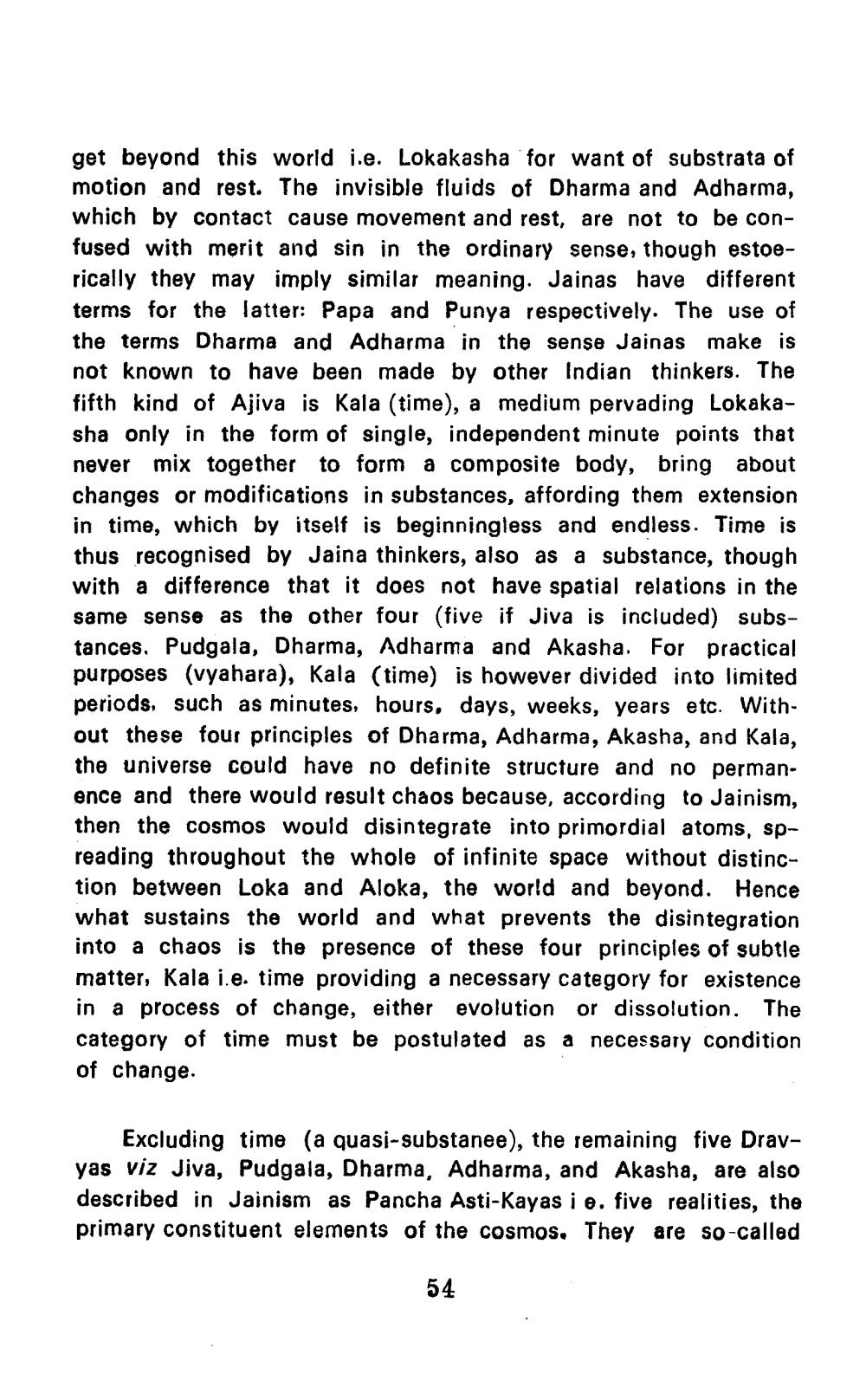________________
get beyond this world i.e. Lokakasha for want of substrata of motion and rest. The invisible fluids of Dharma and Adharma, which by contact cause movement and rest, are not to be confused with merit and sin in the ordinary sense, though estoerically they may imply similar meaning. Jainas have different terms for the latter: Papa and Punya respectively. The use of the terms Dharma and Adharma in the sense Jainas make is not known to have been made by other Indian thinkers. The fifth kind of Ajiva is Kala (time), a medium pervading Lokakasha only in the form of single, independent minute points that never mix together to form a composite body, bring about changes or modifications in substances, affording them extension in time, which by itself is beginningless and endless. Time is thus recognised by Jaina thinkers, also as a substance, though with a difference that it does not have spatial relations in the same sense as the other four (five if Jiva is included) substances. Pudgala, Dharma, Adharma and Akasha. For practical purposes (vyahara), Kala (time) is however divided into limited periods, such as minutes, hours, days, weeks, years etc. Without these four principles of Dharma, Adharma, Akasha, and Kala, the universe could have no definite structure and no permanence and there would result chaos because, according to Jainism, then the cosmos would disintegrate into primordial atoms, spreading throughout the whole of infinite space without distinction between Loka and Aloka, the world and beyond. Hence what sustains the world and what prevents the disintegration into a chaos is the presence of these four principles of subtle matter, Kala i.e. time providing a necessary category for existence in a process of change, either evolution or dissolution. The category of time must be postulated as a necessary condition of change.
Excluding time (a quasi-substanee), the remaining five Dravyas viz Jiva, Pudgala, Dharma, Adharma, and Akasha, are also described in Jainism as Pancha Asti-Kayas i e. five realities, the primary constituent elements of the cosmos. They are so-called
54




